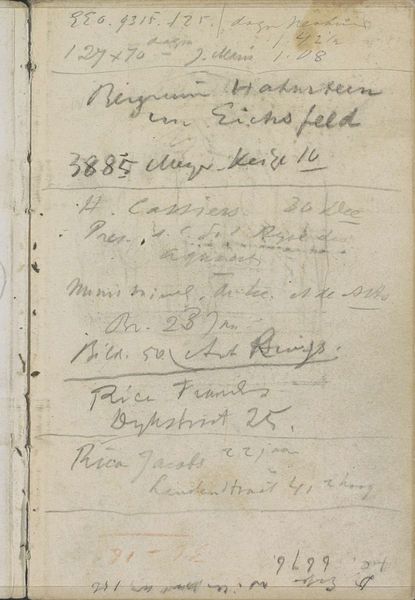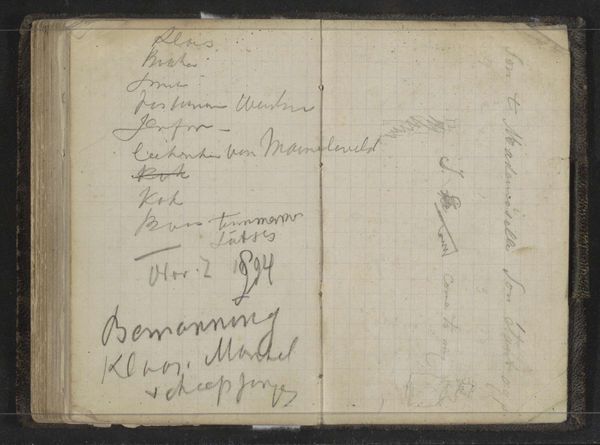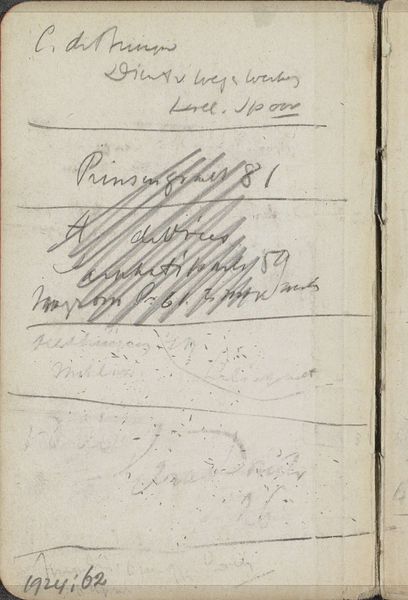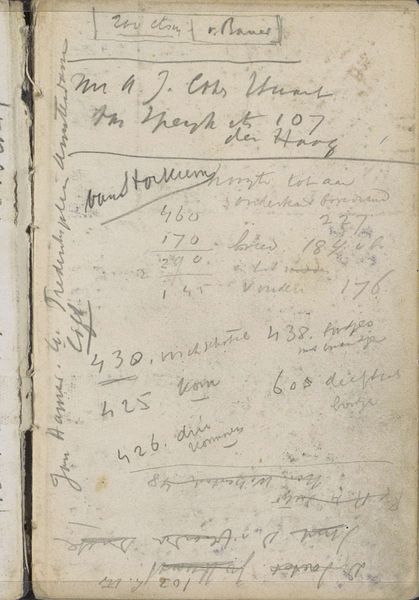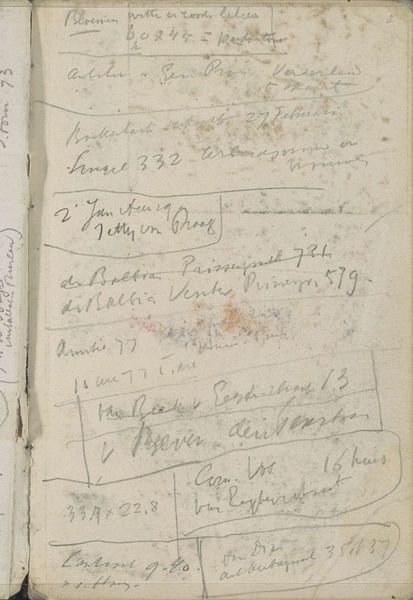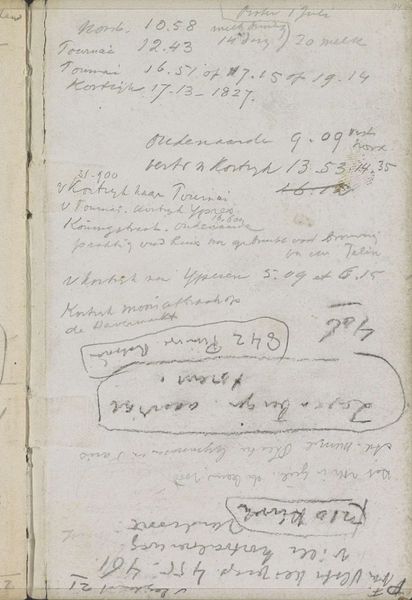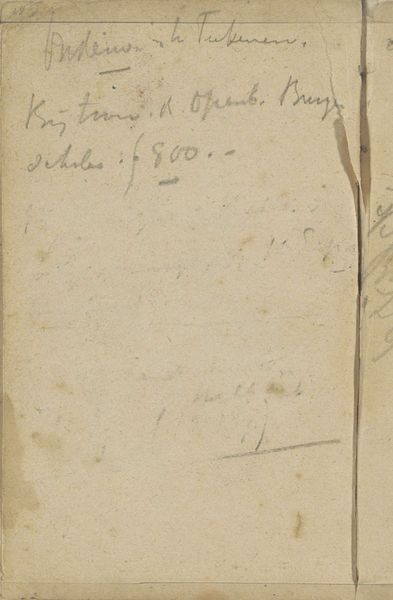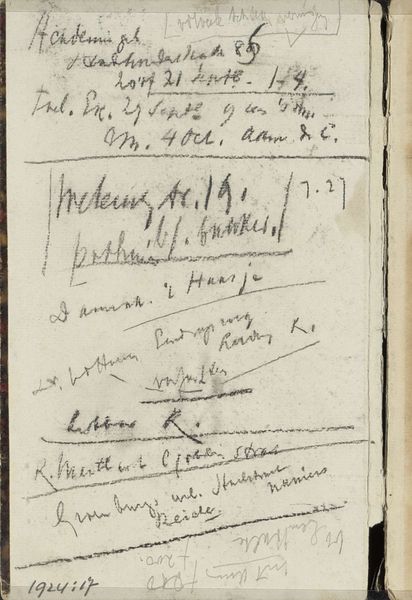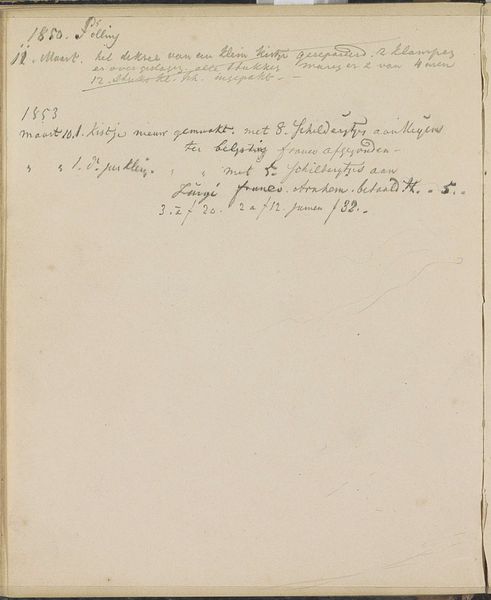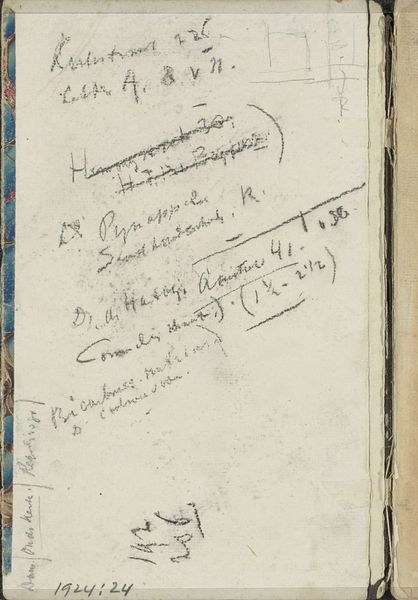
Copyright: Rijks Museum: Open Domain
Editor: This is "Annotaties," a drawing in ink on paper, created by George Hendrik Breitner around 1902-1914. It almost looks like a page ripped from someone's personal sketchbook. It's just text, various scribbles and notes. What do you see in it? Curator: It's a glimpse into the artist's process. Think about Breitner's Amsterdam: a rapidly changing urban landscape, the rise of photography. He moved around capturing all. A sketchbook like this allows us to analyze how the artist interacted with their modern surroundings. Consider how this differs from the formal academic practices dominant then. What does this shift signify to you? Editor: It feels more immediate, less mediated. Almost like a social media feed, but from the turn of the century! Curator: Precisely. It raises questions about the institutional power structures of art, and what the art world considers art. These “annotations” were made during the emergence of modern life and challenged established artistic norms. The presence of annotations offers insight into Breitner's relationship with his materials and challenges notions surrounding high and low culture. What can art be, and for whom? This opens up new dialogue and helps broaden the cannon of traditional historical work of the Dutch golden age. Editor: I never thought about it that way. I was just seeing notes; now I see social commentary! Curator: Absolutely. And that's why contextualizing artwork through a historical lens is helpful, because it challenges us to examine the politics of imagery and think about the broader conversation in which the artist was operating. Editor: That makes me look at the work differently. Thank you for sharing!
Comments
No comments
Be the first to comment and join the conversation on the ultimate creative platform.
